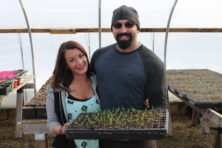Farm Fresh Kimchi
- Share
- Tweet
- Pin
- Share
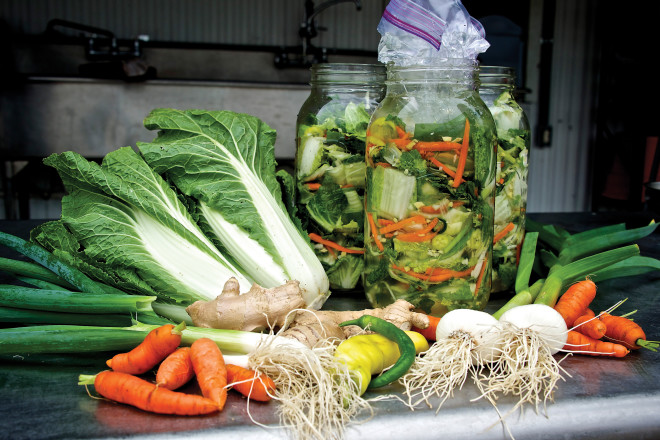
What exactly is kimchi, other than delicious? Is it considered a condiment, a salad, a side dish?
Sour like sauerkraut, yet spiced up with ginger, garlic and hot peppers, kimchi is all of the above.
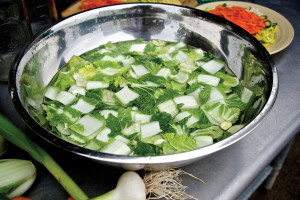
1
It was developed in Korea centuries ago as a way to preserve vegetables for long periods of time and varied based on the region and season. There are many variations of kimchi, too many to list. Traditionally, kimchi was buried and fermented in jars underground for months.
Personally, I have been very intimidated by food preservation – canning, pickling and fermenting. In my head, food preservation seemed like a big nut to crack, until I participated in making a batch of kimchi last fall.
Kimchi is preserved using a process called lacto-fermentation. I was surprised at the simplicity of this process. All you need is water, salt, vegetables and time. Since this ancient process uses no heat the vegetables do not lose their nutritional value.
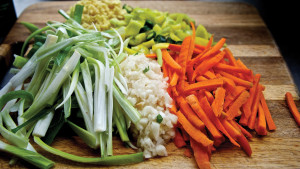
2
Kimchi is uber versatile. Other than cabbage, you can be flexible with the ingredients you choose. Pick whatever is fresh at the time of processing. You are also able to control the level of spice/heat based on how many and what varieties of peppers you choose to include. The recipe included here is an adaptation of the Basic Cabbage Kimchi recipe found in The Joy of Pickling by Linda Ziedrich.
Kimchi is a great way to capture a bit of the summer season in a jar to enjoy all winter long!
Farm Fresh Kimchi
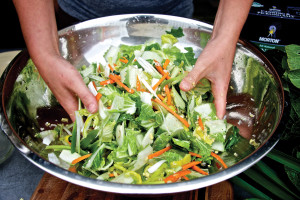
3
Makes one 2-quart jar
Utensils:
1 2-quart (½ gallon) canning jar
cutting board
favorite chopping knife
canning funnel, optional
big bowl
plate

4
quart-size Ziplock plastic bag
Ingredients:
3 tablespoons, plus 1 teaspoon pickling salt
6 cups of water (mix with 3 tablespoons of pickling salt, this creates the brine)
1 head Chinese/Napa cabbage, washed and cut into 2 inch pieces (use more of the white flesh than leafy greens)
1 bunch of scallions, cut long and thin
2 tablespoons fresh ginger, minced (it’s easy to peel ginger using the side of a teaspoon)
2 tablespoons garlic, minced
3 carrots, cut into thin matchsticks
2–3 hot peppers, sliced into thin circles
Directions:

5
Numbers correspond with photos.
- Soak the cabbage in the salt water up to 12 hours before you begin. Weigh the cabbage down with a plate or something heavy while it soaks. Drain the cabbage, reserve the brine/liquid.
- Prepare the veggies.
- Mix drained cabbage with other veggie ingredients. Use your hands; it is the most efficient method.
- Stuff the jar with the chopped vegetables, use your hands to compact the veggies.
- Add the brine/liquid to the jar. Cover the jar contents with liquid. Make sure there is about an inch and a half of air space at the top of the jar.

6
- Place the quart-size Ziplock in the top of the jar. Pour brine into the plastic bag to seal the jar and weigh down the jar contents. Seal the plastic bag.
- Now you wait. Store your jar in a dark cool area. Your kimchi is fermenting! Wait three to six days, remove the baggie and seal the jar. Store your kimchi in the refrigerator where you can savor it for months.
Warning: kimchi is habit forming! Enjoy!
Photography by Len Villano.



